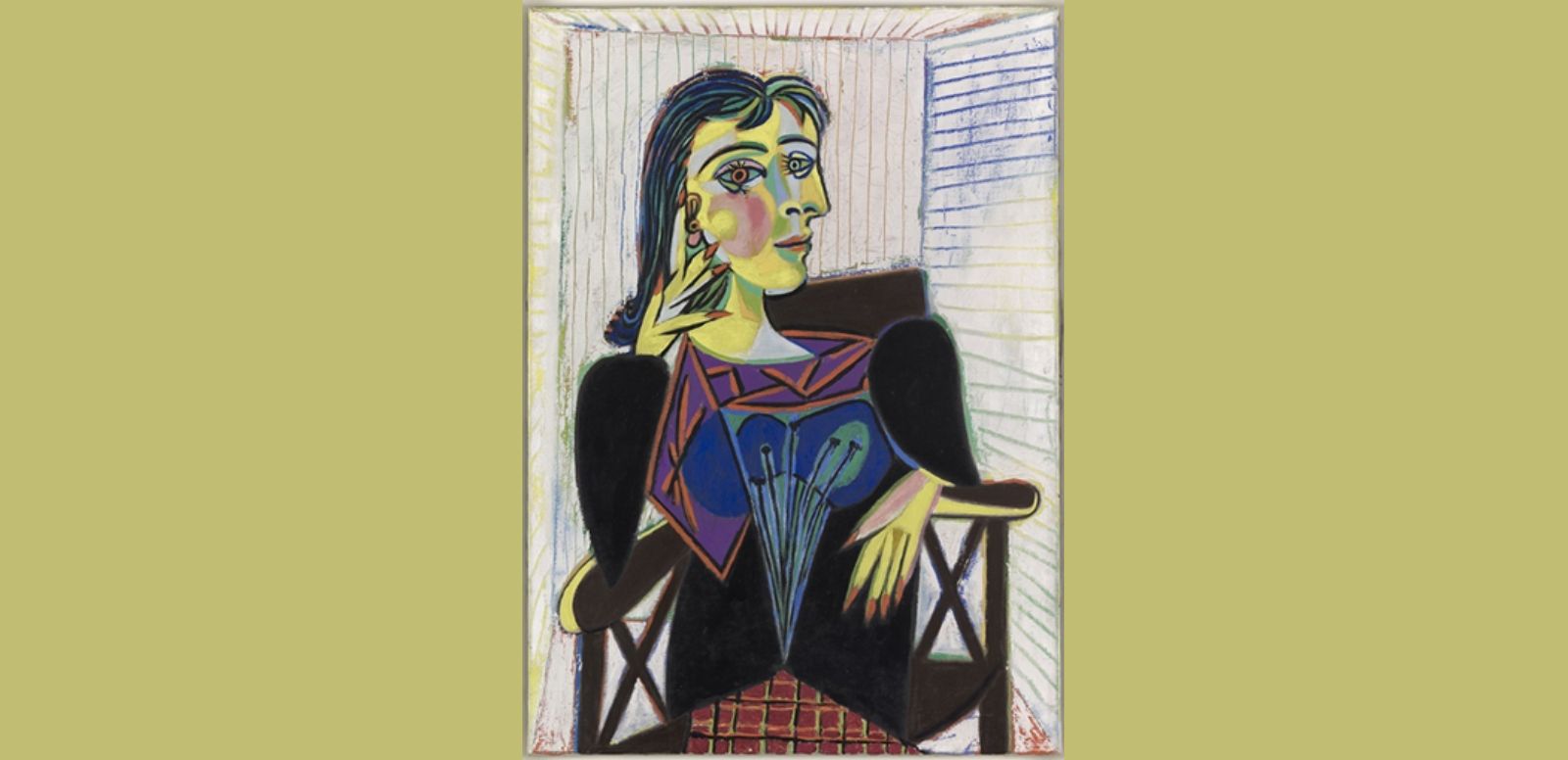
Museo Nacional Picasso-París
© Sucesión Picasso, VEGAP, Madrid, 2023
During the summer of 1936, Picasso retired to the idyllic Côte d'Azur. The works of this period can be read in a biographical key, reflecting his complicated personal relationships. Among these relationships, the figure of Dora Maar, a Yugoslavian photographer, was crucial both professionally and personally, as Portrait of Dora Maar (1937) from this period attests.
The choice of Maar as a model reveals a duality in Picasso's love and artistic life. The work, executed at the same time as the portraits of Marie-Thérèse Walter, presents the very different character of the two: where Walters is fresh and carefree, Maar is sophisticated.
The painting shows Dora Maar with extraordinary elegance. Her attire, an ornate black blouse and red plaid skirt, reinforces her sophistication. The pastel tones of her skin, brightened with touches of canary yellow and blush, soften the apparent complexity of the facial depiction. The attention to detail, such as the enameled nails, the earring, and the intensity of the colors, reveals Picasso's technical skill and his ability to capture Maar's elegance and strong, independent personality.
The seated portrait of Maar is a recurring formula in many of his other pieces. The relaxed gesture of the photographer and friend, resting her hand on her cheek, adds a modern dimension to the composition.
Picasso approaches a cubist language in this classic work, breaking down Maar's face into angles and broken lines. Through this portrait, Picasso not only captures Dora Maar's physical appearance, but also reveals her psychological complexity, using the tools of Cubism to express beyond surface reality.
Sources:
Musée national Picasso-París:

